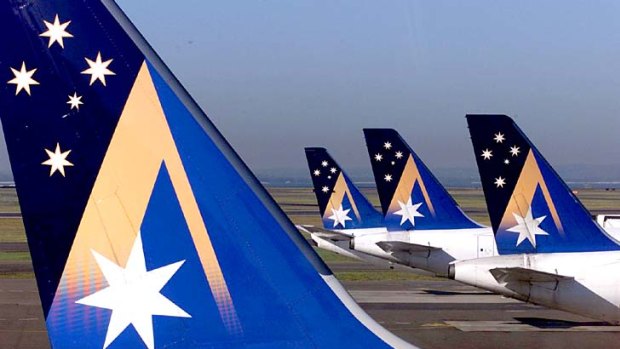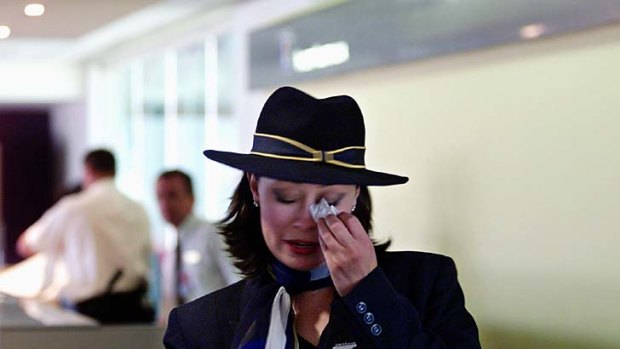This was published 12 years ago
The other 10th anniversary: Ansett's demise

It has been 10 years since Ansett collapsed.Credit: Dallas Kilponen
If you want the exact date, this Wednesday, September 14, will be the 10th anniversary of the greatest crisis the Australian travel industry has ever faced, which was masked by the other great disaster America is commemorating today.
Nine eleven, as it has come to be known, collapsed the American domestic air travel business into a hole from which it did not re-emerge for years.
On the other side of the world, the bankruptcy of Ansett – mismanaged in the 1990s by its lazy Australian management, then taken over by greedy New Zealand raiders in 2000 – not only collapsed the Australian domestic market, but initially gifted more than 90 per cent of what was left to Qantas, whose domestic division in the 1990s had more often than not been the straggler to Ansett’s market leader.

The end ... a tearful Ansett employee during the final days of the airline.Credit: Craig Abraham
Qantas eventually drew “a line in the sand” at 65 per cent of the domestic market as the little backpackers’ budget airline, Virgin Blue, grew to become its only viable opposition.
The fact that the renamed Virgin Australia did not even have a business-class product until three months ago gave Qantas a 10-year free ride as the airline of choice for corporate Australia, a goldmine that still subsidises the disaster that Qantas International has become.
Ansett was not quite a carbon copy, but similar to what became of some of travel’s greatest names in America, when the US deregulated the airline industry in 1978.
Ansett had had more than a decade to get its sky-high operating costs under control after the Australian industry was deregulated in 1989. It cost Ansett and Australian Airlines (the government-owned domestic carrier taken over by Qantas in 1993) hundreds of millions of dollars in losses to outlast Australia’s first generation of budget carriers, Compass Mark I and II between 1990 and 1993.
After the first raiders were seen off, Qantas and Ansett continued to behave like the born-to-rule: the cheapest fare between Melbourne and Sydney was $239 return and if you didn’t like it, you could walk.
It cost the incumbents around $120 to fly a Melbourne-Sydney seat compared with around half that for today’s low-cost carriers like Tiger and Jetstar, even with the astronomical airport fees they are forced to pay.
When the aggressive Brierley Investments had control of Ansett in the last days, there was massive cost-cutting as a New Zealand razor gang went through Ansett headquarters in Franklin Street, Melbourne.
Ansett’s 16,000 staff were demoralised and fearful of the future. The cost-cutting is thought to have caused defective book-keeping in the maintenance records department, which led to the grounding of Ansett’s Boeing 767 fleet in April 2001, barely a day before the busy Easter holidays.
Ansett lost public confidence and never regained it. It was a coincidence that air travel on the other side of the world would also be decimated by unrelated events in September 2001.
What are you memories of Ansett? Do you remember them as the bad old days when flying was much more expensive, or something more benign? Were you one of many who caught the bus or train instead of the plane?
Sign up for the Traveller Deals newsletter
Get exclusive travel deals delivered straight to your inbox. Sign up now.